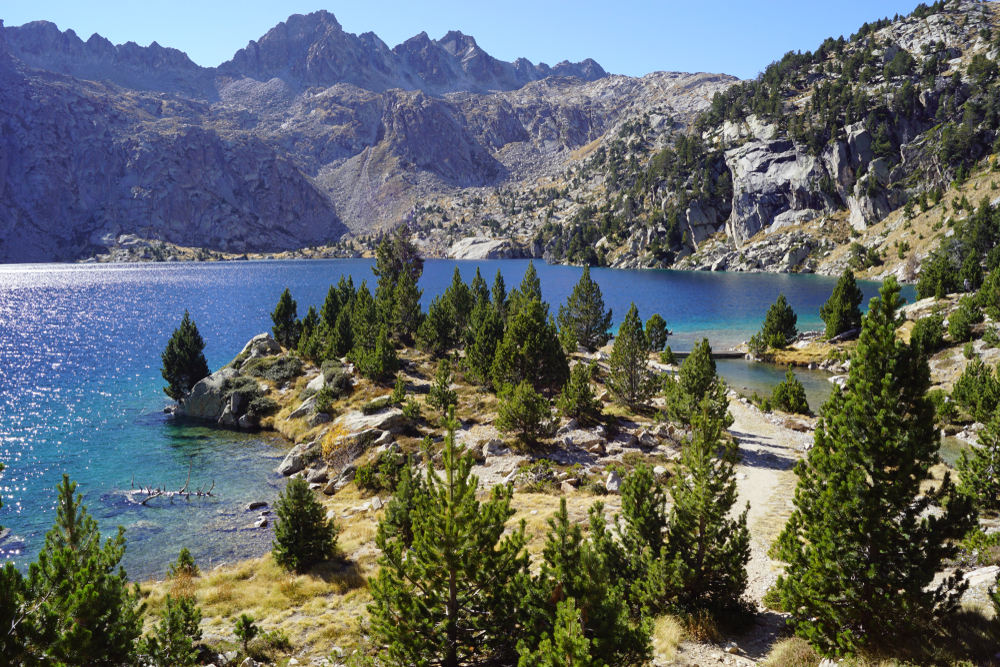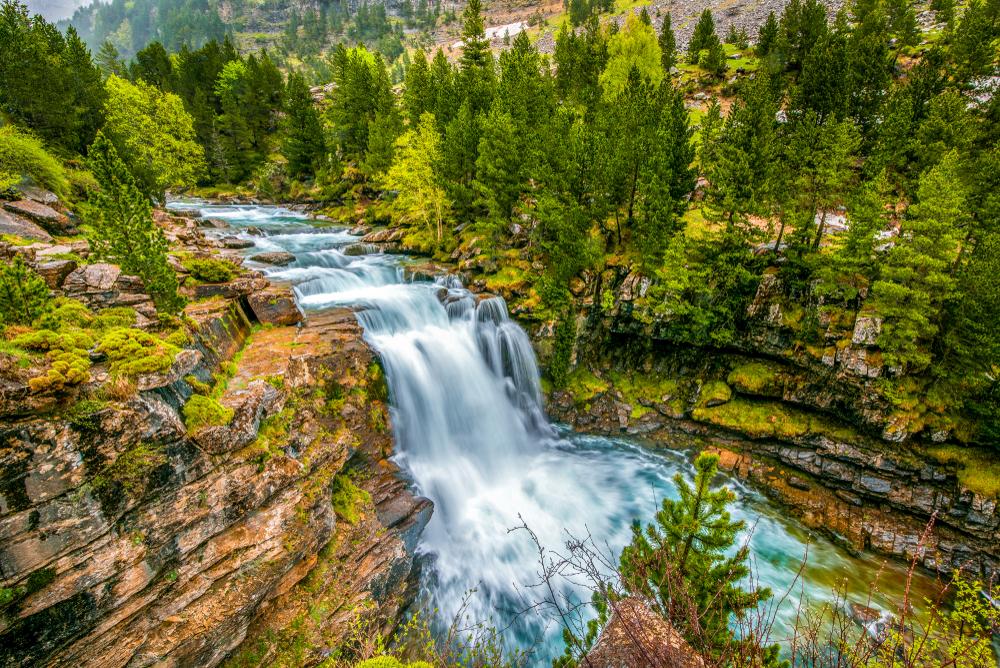Aiguestortes i Estany de Sant Maurici Overview
Aigüestortes i Estany de Sant Maurici National Park, known in Catalan as Parc Nacional d’Aigüestortes i Estany de Sant Maurici, is a breathtaking natural reserve located in the Spanish Pyrenees in the region of Catalonia.
The park spans approximately 55 square miles (141 square kilometers) and is renowned for its striking alpine landscapes, high-altitude lakes, and dramatic peaks. Situated in the provinces of Lleida, it is one of Spain’s only national parks in the Pyrenees, offering a unique blend of rugged mountain terrain and pristine water features.
The landscape of the park is characterized by its steep, glaciated valleys, craggy peaks, and over 200 lakes, the most famous being Estany de Sant Maurici. The park is bisected by the Noguera Pallaresa and Noguera Ribagorçana rivers, which contribute to the diverse hydrological systems that define the region.
One of the most striking geological features is Els Encantats, a pair of jagged twin peaks that rise dramatically above the landscape. The park’s elevation ranges from 4,000 feet (1,200 meters) to over 9,800 feet (3,000 meters), creating a variety of ecosystems.
The lower valleys are dominated by lush forests of black pine, silver fir, and beech, while higher elevations feature alpine meadows and rocky outcrops. The diversity of vegetation creates a mosaic of colors throughout the seasons, particularly in autumn when the deciduous trees transform into brilliant hues of red and gold.
Wildlife is abundant in Aigüestortes i Estany de Sant Maurici National Park, making it a haven for nature enthusiasts and photographers. Among the mammals that inhabit the park are the Pyrenean chamois, red deer, roe deer, and marmots, which are commonly spotted in the open alpine areas. The elusive Iberian lynx and brown bear, although rare, also roam the park’s more remote regions.
Birdwatchers can expect to see golden eagles, bearded vultures, and peregrine falcons soaring over the rugged cliffs. The diverse avian population also includes black woodpeckers, Eurasian capercaillies, and common crossbills, which thrive in the dense forests. The park’s numerous water sources also support populations of amphibians such as the Pyrenean brook salamander.
Visitors to the park are drawn to its stunning natural beauty and the variety of activities it offers. Hiking is one of the most popular ways to explore, with a well-maintained network of trails ranging from easy walks to challenging high-mountain routes.
The Carros de Foc route is a particularly famous trekking circuit, linking the park’s mountain refuges and offering breathtaking views. During winter, the park transforms into a destination for snowshoeing and cross-country skiing. Mountain biking and rock climbing are also popular in designated areas, while the lakes and rivers provide opportunities for fishing.
Conservation efforts within the park have been largely successful, ensuring the protection of its delicate ecosystems. Strict regulations limit human impact, and initiatives are in place to monitor and preserve the biodiversity.
Challenges such as climate change and increasing tourism pressure pose threats, but sustainable tourism practices and habitat restoration projects help mitigate these issues.











































































